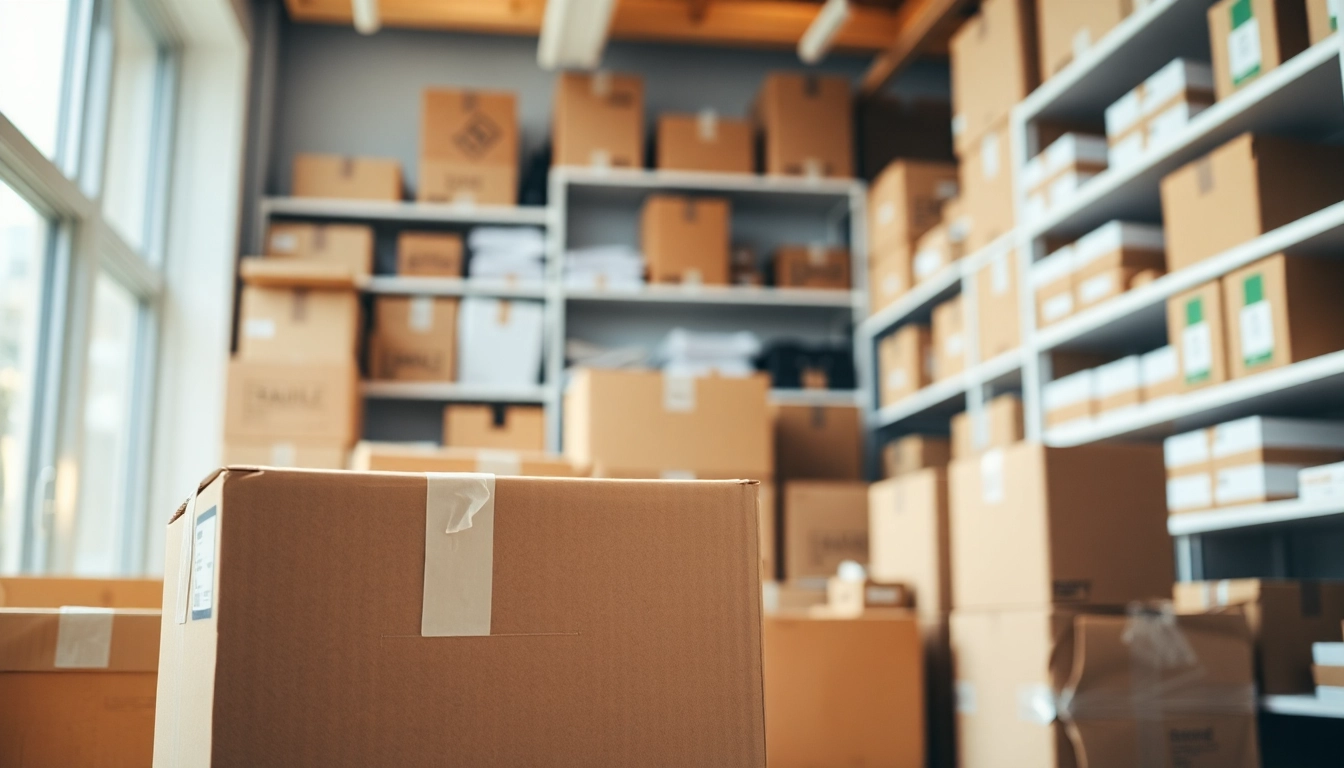Understanding Different Types of Boxes
1. Standard Boxes and Their Uses
When it comes to shipping, the type of box used can significantly impact the safety and integrity of the items inside. Standard boxes are perhaps the most common type, designed to accommodate a variety of products. They come in numerous sizes and shapes, such as rectangular and square. Standard boxes are generally made from corrugated cardboard, which provides strength and protection. These boxes are particularly ideal for shipping clothing, books, and other non-fragile items.
In addition to their versatility, standard boxes can be easily sourced from various suppliers, making them a cost-effective option for personal and business needs. For those looking for quality boxes, it’s essential to consider local shipping stores or online retailers that specialize in packaging solutions. They often provide different grades of boxes, ensuring a perfect match for your shipping requirements.
2. Specialty Boxes for Unique Items
Not all items fit comfortably in standard boxes. Specialty boxes have been designed to protect unique or fragile items such as artworks, glassware, or electronics. These boxes often come padded with additional materials to prevent movement and damage during transit. For example, art boxes are often extra deep to accommodate canvas paintings, while wine boxes usually feature compartments to safeguard individual bottles.
Additionally, many specialty boxes can be customized to meet specific shipping requirements. This includes the integration of foam inserts, dividers, or even thermal insulation for temperature-sensitive items. Businesses that frequently ship delicate goods should consider investing in specialty boxes to minimize the risk of damage and ensure customer satisfaction.
3. Eco-Friendly Box Options
As consumers become more environmentally conscious, the demand for sustainable packaging solutions rises. Eco-friendly boxes are made from recyclable materials and designed to minimize environmental impact. Brands can choose recycled cardboard materials to create boxes that consumers are proud to receive. Furthermore, some companies are now producing biodegradable packaging, which breaks down naturally and does not contribute to landfill waste.
Using eco-friendly boxes not only demonstrates a company’s commitment to sustainability, but can also enhance brand loyalty among environmentally-conscious customers. Businesses that adopt green practices may find themselves better positioned in markets where eco-friendliness is increasingly valued.
Measuring Your Items for the Perfect Fit
1. Importance of Dimensions in Choosing Boxes
It is crucial to select a box that adequately fits the item being shipped. An ill-fitting box can lead to movement during transit, increasing the likelihood of damage. To find the perfect box size, it is essential to measure the dimensions of the items carefully. An appropriately sized box can also help minimize shipping costs, as shipping fees often depend on the size and weight of the package.
2. Tools for Accurate Measurements
To ensure accurate measurements, consider using a tape measure for items larger than a foot, as this will provide confidence in your dimensions. For smaller items, a ruler may suffice. When measuring, it’s wise to account for additional padding or packing materials that will be used inside the box, such as bubble wrap or packing peanuts. Remember to measure length, width, and height, and take into account any irregular shapes that might require more specialized solutions.
3. Common Mistakes to Avoid
One common mistake is overlooking the weight limit of the boxes being used. Each box is rated for a maximum weight, and exceeding this could lead to box failure during transit. In addition to weight, ensure that your measurements are taken at the largest points of the item, rather than making an assumption about dimensions. Improper dimensions may lead to increased shipping costs or damaged goods. Always double-check your measurements before making a purchase to ensure you select boxes that will thoroughly protect your items.
Best Practices for Packing Boxes
1. Packing Materials to Use
Choosing the right packing materials is just as vital as selecting the proper boxes. Start by utilizing cushioning materials such as bubble wrap or foam peanuts to create a protective barrier around your items. For fragile goods, double-walling boxes or using additional layers of padding can make a substantial difference in stability. Sealing tape is crucial; use strong packing tape that can hold up under pressure and remain secure throughout transit.
2. Securing Your Shipment
This step goes beyond simply putting the items in a box; ensuring that everything is tightly secured can mean the difference between a successful delivery and a damaged shipment. When packing items, place heavier items at the bottom of the box and lighter items on top. This will help reduce shifting and create a more stable load during transport. Fill any empty spaces with additional packing material to prevent items from moving around inside the box.
3. Labeling and Documentation Tips
Proper documentation and labeling are crucial for a seamless shipping experience. Clearly label each box with the recipient’s shipping address and contact information. Incorporate tracking numbers and barcodes where necessary for easier tracking. When shipping internationally or to specific regions, ensure that you comply with local shipping regulations and provide all necessary customs documentation. This will facilitate smooth transitions through customs and reduce potential delays in delivery.
Boxes for Different Shipping Methods
1. Choosing Boxes for Ground Shipping
Ground shipping tends to be the most common and economical option for many packages, particularly for larger items. When selecting boxes for ground shipping, sturdy and versatile boxes should be your priority. They need to withstand the weight and handling common in trip transit. Plus, ensure the boxes are appropriately cushioned for road vibration. Consider using double-walled boxes if you are shipping heavier items or goods susceptible to damage.
2. Air Shipping Box Requirements
When it comes to air shipping, the priority shifts toward minimizing the weight of the package to reduce shipping costs. Lightweight boxes made of thin but strong cardboard are ideal for air shipping. Additionally, because air freight can be more expedited, items need to be packed more securely to withstand the faster handling methods. Pay careful attention to any weight limits imposed by airlines or freight services, and again, use the right packing materials to ensure your items remain safe.
3. International Shipping Considerations
When choosing boxes for international shipping, customs regulations and requirements come into play. Be aware that some countries have specific packaging requirements for goods being shipped across their borders. It is essential to understand these requirements beforehand to avoid potential fines or confiscation. Using sturdy boxes with clear labeling and appropriate customs documentation will streamline the shipping process significantly and decrease the likelihood of complications.
Where to Buy Quality Boxes
1. Local vs. Online Suppliers
The decision to purchase boxes from local suppliers or online stores can greatly depend on urgency and availability. Local suppliers typically allow for immediate acquisition and may have the benefit of providing advice on the correct type of box needed. On the other hand, online vendors often provide a more extensive selection and competitive pricing due to lower overhead costs. Furthermore, online reviews can offer insights into the quality of the products.
2. Evaluating Cost vs. Quality
When selecting boxes, focusing solely on cost can be a risky mistake. While seeking a bargain is always tempting, ensure that the boxes meet the necessary strength and quality standards required for safe shipping. Cheaper boxes may not adequately protect your items, leading to potential damages that can outweigh any savings. Compare various suppliers and read product specifications before making a purchase to ensure the quality of materials is satisfactory.
3. Recommendations for Best Suppliers
Some of the best box suppliers combine quality, price, and customer service. National office supply chains often provide a well-rounded range of options. Additionally, specialty packaging stores and dedicated shipping centers like The UPS Store can offer expert advice and immediate availability across various types of boxes. For businesses that require bulk purchases, establishing a relationship with a packaging wholesaler may yield significant savings, along with the expertise necessary to understand specific needs.





